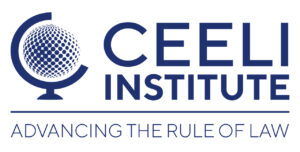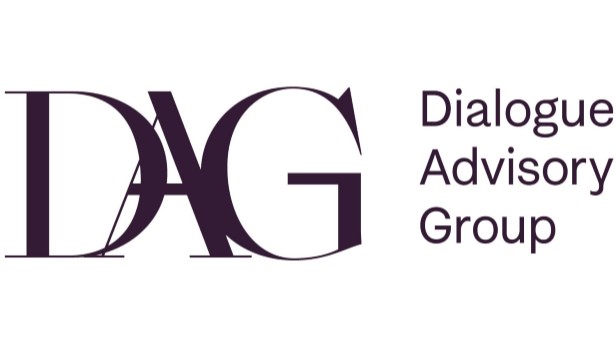Offers a comprehensive analysis of global energy patterns and projections up to 2050. It emphasizes the ongoing worldwide energy crisis caused by Russia’s invasion of Ukraine and its impact on global energy systems. The report explores crucial questions about the crisis, including its potential effect on clean energy transitions and how government reactions might influence energy markets. Additionally, it includes an updated roadmap to achieving Net Zero Emissions by 2050 and investigates energy security risks. Moreover, the report provides future forecasts for energy demand, electricity, liquid fuels, gaseous fuels, and solid fuels, using the key input dataset from the Global Energy and Climate (GEC) Model. It aims to provide insights into global energy supply and demand under various scenarios and the implications for energy security, climate goals, and economic growth.
Overall
Overview and key findings
Covers expected fossil fuel demand, China’s economic growth uncertainties, solar photovoltaic production, and the 1.5°C limit challenges. It evaluates energy transition costs, risks in electrification and decarbonization, and emerging markets’ potential for less carbon-intensive paths. The report emphasizes critical minerals for clean electricity, rising electric cars, competitive costs of clean energy, and the role of incentives.
Projected Peak in Fossil Fuel Demand
- Projects fossil fuel demand to peak soon due to changing energy consumption trends and a shift to cleaner, renewable sources. Technological advancements, policy actions, and market dynamics are considered in this analysis.
Uncertainties in China’s Economic Growth
- Assesses how uncertainties in China’s economic growth could influence the global energy outlook. Given China’s key role in energy consumption and production, its economic fluctuations can significantly impact energy markets. The potential effects of various economic growth paths in China on energy demand, supply, and investments are evaluated.
Implications of Manufacturing Capacity for Solar PV Modules
- Explores the impact of the swift growth of solar PV module manufacturing, likely propelled by China’s renewable energy pursuits. It examines the prospects and hurdles of boosting solar PV production, such as supply chain stability, technological advancement, cost-effectiveness, and environmental sustainability.
Risks and Opportunities in Staying Within the 1.5°C Limit
- Addressing risks and opportunities related to 1.5°C global warming is key for climate change mitigation. Discusses achieving this target, the potential outcomes of surpassing it, and the actions needed for a low-carbon economy transition. Also mentions the role of clean energy, policy, and international cooperation in achieving climate goals.
Affordability of the Energy Transition
- Discusses the cost of shifting to sustainable energy for households, industries, and governments. It analyzes the financial impact of clean energy adoption, energy efficiency improvement, and fossil fuel phase-out. Explores investment needs, financial incentives, and the economic effect of the energy transition to balance affordability and sustainability.
Risks Affecting Technologies for Electrification and Decarbonization
- Highlight the risks and challenges facing key technologies essential for electrifying and decarbonizing the power supply. Hence, it includes discussions on the reliability of renewable energy sources, grid integration challenges, energy storage solutions, and the resilience of energy infrastructure. Addressing these risks is crucial for accelerating the transition towards a cleaner and more resilient energy system.
Potential for New Lower Carbon Pathways in Emerging Markets
- Examining low-carbon pathways in emerging markets is crucial for sustainability and climate action. The report might evaluate policies and tech options for these economies to cut emissions, boost energy security, and drive economic growth. It considers the chance for cleaner technology leapfrogging and the importance of international support in enabling sustainable energy transitions.
Setting the scene
Discusses the global energy sector disruptions caused by events like the COVID-19 pandemic and geopolitical tensions, including Russia’s invasion of Ukraine. It emphasizes changes in the geopolitical landscape, new energy policies, and the persistent problem of high greenhouse gas emissions. The challenging macroeconomic environment, influenced by recent crises and the end of low interest rates, affects energy investment decisions and the overall progress of the energy transition.
New Context for the World Energy Outlook
- Introduces the changing context of the World Energy Outlook. It discusses how recent events like the COVID-19 pandemic and geopolitical tensions have altered the energy landscape, creating uncertainties and challenges. The analysis examines how these changes impact energy markets, policies, and investments, emphasizing the need to understand today’s context for future energy strategies.
Geopolitical Landscape and Energy Divides
- Delves into geopolitics and energy, highlighting geopolitical influences on energy policies, trade, and security. It addresses recent geopolitical events, like conflicts and trade disputes, and their impact on global energy divides affecting energy flows, investments, and decisions. Managing these divides for energy sector stability and sustainability is emphasized.
Emerging Energy and Industrial Policies
- Concerns energy and industrial policy shifts due to changing energy landscapes and geopolitics. It covers how countries adapt to new policies for cleaner energy sources, enhanced energy security, and domestic industrial growth. It underscores key measures, regulations, and incentives for developing clean energy technologies and industries.
Concerns about Energy Security and Resilience
- Discusses energy security and resilience in the face of geopolitical and supply chain challenges. It examines the risks of overdependence on specific energy sources and the need for resilient infrastructure, diversified sources, and international cooperation for reliable supply.
Impact of Greenhouse Gas Emissions on Climate Risks
- Examines the impact of high greenhouse gas emissions on climate risks and the urgency of sustainable energy transitions. It highlights the connection between energy emissions and climate impacts, emphasizing the need for mitigation efforts. It underscores the role of clean energy technologies, carbon reduction strategies, and international agreements in fighting climate change and building resilience.
Challenges in a Difficult Macroeconomic Context
- Concerns the economic challenges the energy sector faces due to crises such as the global energy crisis and inflation, impacting markets, investments, and affordability. It highlights the effects of economic uncertainties on energy transition, policy, and sustainability, emphasizing the need for actions to overcome economic challenges and boost energy resilience.
Pathways for the energy mix
Offers insights into the changing global energy consumption landscape and the shift towards a more sustainable and diverse energy mix. It emphasizes major trends, challenges, and opportunities in various sectors, such as transportation, electricity generation, and heating. This section illuminates the transformative changes occurring in the energy system.
Transport Sector
- Focuses on the trends and developments in the transport sector, emphasizing the increasing energy demand, particularly in the context of rebounding from the COVID-19 pandemic. It highlights the dominance of oil in meeting transport energy needs, with a specific focus on the aviation sector and the growing role of electric vehicles (EVs) in road transport. The section underscores the shift towards electrification and the challenges and opportunities associated with reducing the sector’s carbon footprint.
Global Energy Market Dynamics
- Provides an overview of the global energy market dynamics, reflecting on the turbulent year experienced in 2022, characterized by soaring energy prices, especially in natural gas markets. It discusses the impacts of geopolitical tensions, commodity price volatility, and government interventions on energy markets and consumer welfare. The analysis also highlights transformative changes in clean energy technologies, such as solar and heat pumps, and their potential to reshape the energy landscape in the coming years.
Secure and people-centred energy transitions
Emphasizes the importance of energy security and prioritizing the welfare of individuals and communities during the transition to a sustainable energy system. It highlights the need for policies and strategies that enhance energy security and place people in decision-making processes. The goal is to have equitable access to clean, reliable, and affordable energy sources.
Energy Security
- Highlights the importance of energy security for stable, resilient energy systems. It addresses geopolitical, supply chain, and market volatility challenges, stressing the need for energy source diversification, infrastructure resilience, and energy efficiency. It also considers international cooperation and strategic planning’s role in global energy security.
People-Centred Energy Transitions
- Promotes energy transitions focusing on people’s well-being and interests. It emphasizes addressing energy poverty, promoting access for marginalized groups, and involving stakeholders in decisions. Inclusive, participatory strategies are crucial for empowering communities, creating jobs, improving life quality, and achieving sustainability.
Equitable Energy Access
- Discusses energy availability and affordability disparities across regions and socio-economic groups. It addresses vulnerable populations’ barriers and strategies to overcome them through targeted interventions, financing mechanisms, and technology. Policy frameworks, regulatory measures, and public-private partnerships are highlighted in ensuring universal energy access and a sustainable transition.
Regional Insights
Regional Energy Demand and Supply
- Studies regional energy demand and supply, considering population growth, economic factors, and industrial activities. It emphasizes regional energy use and production variations, discusses factors driving energy demand growth, and explores opportunities for a more sustainable and efficient energy transition.
Policy and Regulatory Frameworks
- Reviews energy market policies and regulations, exploring government actions for promoting energy security, sustainability, and affordability. It assesses policy impacts on energy transitions, renewables, carbon reduction, and energy access, highlighting successful regional practices. The role of international cooperation and regional initiatives in achieving energy goals is also discussed.
Regional Energy Challenges and Opportunities
- Identifies regional energy transition challenges and opportunities, discussing energy security, environmental impacts, and social implications. It offers sustainable energy development solutions and highlights market trends, investment opportunities, and successful initiatives, stressing areas for improvement and collaboration.
United States
Encompasses the composition of the energy mix, the shift towards environmentally friendly sources, and the influence of policies, market trends, and technology. The roles of regulators, legislation, partnerships, and stakeholder involvement in moulding the U.S. energy landscape and transition are highlighted. Discussions also touched on U.S. energy security, resilience, and economic implications, including contributions to GDP, employment, investment, and trade. The exploration extends to economic diversification, skills development, and sustainable growth within the energy sector, providing a comprehensive outlook on the key trends, policy developments, and challenges shaping the U.S. energy transition and sustainability.
Latin America and the Caribbean
Reviews Latin America and the Caribbean’s diverse energy resources, potential for renewable energy expansion, and carbon emission reduction. It discusses the policy and regulatory frameworks for renewable energy development and climate change mitigation. It covers energy security, resilience, and the energy sector’s role in sustainable development, economic growth, and job creation. The report highlights the potential of clean energy investments and technology for economic diversification and inclusive development. It underscores the opportunities for innovation and private sector engagement in promoting sustainable energy solutions and a low-carbon economy.
European Union
Examines the EU’s energy landscape, focusing on the transition to renewables and efficiency improvements. It discusses climate goals, emission reduction policies, and expanding renewable sources. The report highlights challenges and opportunities in increasing renewables in the energy mix and supporting mechanisms. It also covers EU energy security, market integration, infrastructure, and resilience. It considers cross-border energy trading and initiatives for efficiency. Lastly, it discusses energy conservation policies, labelling, eco-design standards, and the move towards sustainability, summarizing trends, policies, and challenges in the EU’s energy efforts.
Middle East
Explores contributions to the global energy supply, particularly from Saudi Arabia, Iraq, Iran, and the UAE, as well as the use and export of natural gas. Underscores renewable energy trends, like solar power and clean energy investments, as the region targets energy diversification and carbon reduction. It evaluates geopolitical factors affecting energy security, regional conflicts, infrastructure threats, and global alliances. Scrutinizes the impact of these tensions on energy markets and supply chain resilience, the region’s sustainable energy shift, and the implications of this transition. Lastly, it investigates the region’s influence on climate change and mitigation strategies.
Africa
Examines Africa’s energy landscape, including access, renewables expansion, and infrastructure challenges. It explores the potential of renewables for economic growth, job creation, and carbon reduction. The section emphasizes a shift towards a sustainable energy system, links energy access to social progress, and discusses the role of regional cooperation in achieving Africa’s energy transition and Sustainable Development Goals.
Eurasia
Discusses Eurasia’s energy resources, key producers like Russia and Kazakhstan, infrastructure, renewables, energy efficiency, and emissions reduction initiatives. It covers geopolitical influences, energy trade dynamics, potential market liberalization, technology transfer, and the impact of climate change, including adaptation strategies and sustainable development efforts.
China
Covers the country’s energy trends, policies, and challenges, such as increased fossil fuel demand and growth of renewable energy. It covers China’s shift to a sustainable, low-carbon system, discussing renewable technology, clean energy advancements, capacity targets, green tech investments, and carbon neutrality initiatives. It also discusses China’s energy policy, regulatory environment, sustainability efforts, energy security issues, and their impact on regional stability and global markets.
India
Discusses India’s energy sector, including trends, policies, coal-renewable balance, and carbon reduction strategies. It reviews India’s energy policy, focusing on security, affordability, and sustainability, and discusses renewable endeavors like solar and wind power. The report analyzes policy impacts on investment and technology adoption, addresses challenges like electrification and energy poverty, and covers initiatives to widen energy access. It offers a holistic view of India’s energy landscape.
Japan and Korea
Japan
Examines Japan’s energy transition post-Fukushima, including nuclear power, renewable energy deployment, and energy efficiency. Evaluates Japan’s energy mix diversification, renewable targets, reactor restarts, energy security, market reforms, and clean technology promotion. It could review policies like feed-in tariffs for solar and wind, offshore wind plans, energy storage initiatives, and challenges in grid integration and offshore wind potential. Covers Japan’s progress in energy conservation, smart grid tech, and sustainable practices.
Korea
Includes South Korea’s market reforms, such as deregulation in the electricity sector and efforts to improve energy efficiency and increase renewable energy use. It may also cover energy security strategies, pricing, state-owned enterprises, renewable projects, and investment incentives. Other topics include energy storage, green hydrogen production, and offshore wind potential.
Southeast Asia
Examines the region’s energy sector, focusing on fossil fuels, the growing role of renewables, and energy transition plans. It could discuss energy diversification, security, carbon reduction, and challenges associated with scaling up renewable energy. The analysis also touches on energy access in low-electrification areas, poverty reduction, sustainable development, and energy security concerns, including disruptions and geopolitical risks. Strategies for improving energy security might also be proposed.




